Outdoor Range Hood Buyer’s Guide (7 Things to Consider)
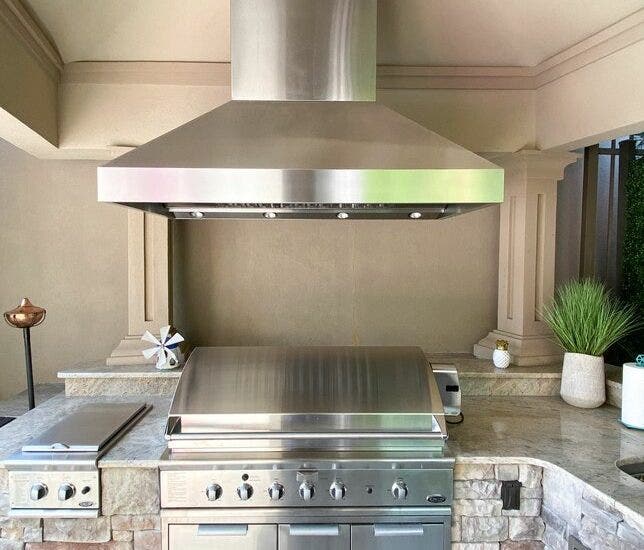
Are you in the market for an outdoor range hood? At Proline, we manufacture quality outdoor vent hoods that will last you for years to come. Choosing the right one can be daunting though. From size and CFM to filters and duct size, there’s a lot to consider when shopping for your outdoor range hood. Our outdoor range hood buyer’s guide will cover everything you need to know to make an informed decision.
We’re here to help you if you’ve been wondering: when should I get an outdoor range hood?
If you’ve already made up your mind, you can check out some of our best outdoor range hoods in this post.
Table of Contents
4 Reasons to Get an Outdoor Range Hood
It’s never too late to invest in an outdoor range hood. But it is an investment and you might be procrastinating it because of the cost, installation, or other reasons.
There are several different reasons why you might consider an outdoor vent hood. It will make cooking easier and healthier. Not to mention it will look beautiful in your outdoor kitchen. We’ll go over a few signs that you need an outdoor hood for your patio.

You cook outside several times a week.
Any avid griller will absolutely love their outdoor range hood. Sometimes open-air ventilation is not enough. Without a hood, grease will accumulate on walls and overhangs as you cook day after day. Cooking odors will fill the area and linger for days. But an outdoor hood ensures your air is clean and fresh.

You notice smoke buildup in your patio area.
Smoke buildup is a sign that your patio doesn’t have adequate ventilation. The solution? A professional outdoor range hood. Just make sure you buy one with enough CFM so you get the most out of your hood. We’ll go over CFM a little later.

You notice grease stains on the walls and overhangs.
Grease stains, especially around the cooking area, are another sign of poor ventilation. Grease buildup and stains can accumulate whether you’re inside or outside. But on an outdoor patio, it’s even more important. Grills produce heavy smoke, and grease and run at high heat. You might be doing a lot of frying which means you’ll be dealing with a lot of grease too. Outdoor range hoods are designed to catch grease with heavy-duty baffle filters.
So all the grease that would’ve ended up on your walls is vented through your hood and caught by the filters. The higher the CFM, the more grease the filters catch.

Your kitchen is enclosed.
Enclosed kitchens are another sign you should consider an outdoor range hood. In open-air kitchens, your hood is outside which means you have decent ventilation. That being said, it’s still good to buy a hood in these kitchens. You’ll ensure the cooking area remains grease-free and you’ll breathe cleaner air while hovering over the grill and cooking.
But it’s more important to invest in a hood in enclosed kitchens. Grease, smoke, and toxins produced from your cooking can build up in a confined space. Unless you open a window or door you don’t have any ventilation in these areas. And that’s not nearly as effective as a professional outdoor range hood.
Learn more in our post ‘Do I need a vent for an outdoor kitchen?’
7 Things to Consider When Choosing Your Outdoor Range Hood

Size
To keep smoke and cooking odors out of your outdoor kitchen, size your hood 12 inches larger than your range. It should extend six inches beyond your range on each side. This gives great coverage over your cooktop, capturing all the smoke and grease with ease.
For example, over a 36” outdoor grill, mount a 48” vent hood. Learn more about sizing your range hood right here.
Mounting Height
Mount your outdoor range hood between 36” and 42” above your grill. This reduces the risk of your hood getting damaged. It’s also where your hood will be the most efficient. Any further and much of the smoke and oil will escape into your cooking area.
Learn more about mounting height in our range hood mounting height guide.
CFM
We recommend at least 1200 CFM for your outdoor vent. The most powerful outdoor hoods feature 2000 CFM blowers; here are some of our favorites.
If you know the BTUs (see also ‘What Are BTUs?‘) of your grill, you can calculate the minimum CFM you need for your hood. Just divide the total BTUs by 100. For example, if your gas grill produces 120,000 BTUs, you’ll want at least a 1200 CFM range hood.
Material
Outdoor vent hoods are manufactured in durable, corrosion-resistant stainless steel. It withstands the elements along with the high heat of your grill. One of the most popular outdoor-rated stainless steels is 304 SS.
Learn more about the difference between 304 SS and 430 SS, indoor-rated stainless steel, at this link.
Ducted or Ductless?
When shopping for outdoor hoods, you have one option: ducted. We strongly recommend a ducted range hood for your outdoor kitchen because ductless hoods simply don’t have enough power. They won’t be able to handle the smoke and heat of your outdoor grill.
Click here to learn more about your venting options for ducted hoods. Or to learn more about ductless hoods, check out this post.
Duct Size
In most cases, you need a 10” duct for your outdoor hood. Take a look at the chart below comparing CFM and duct size.
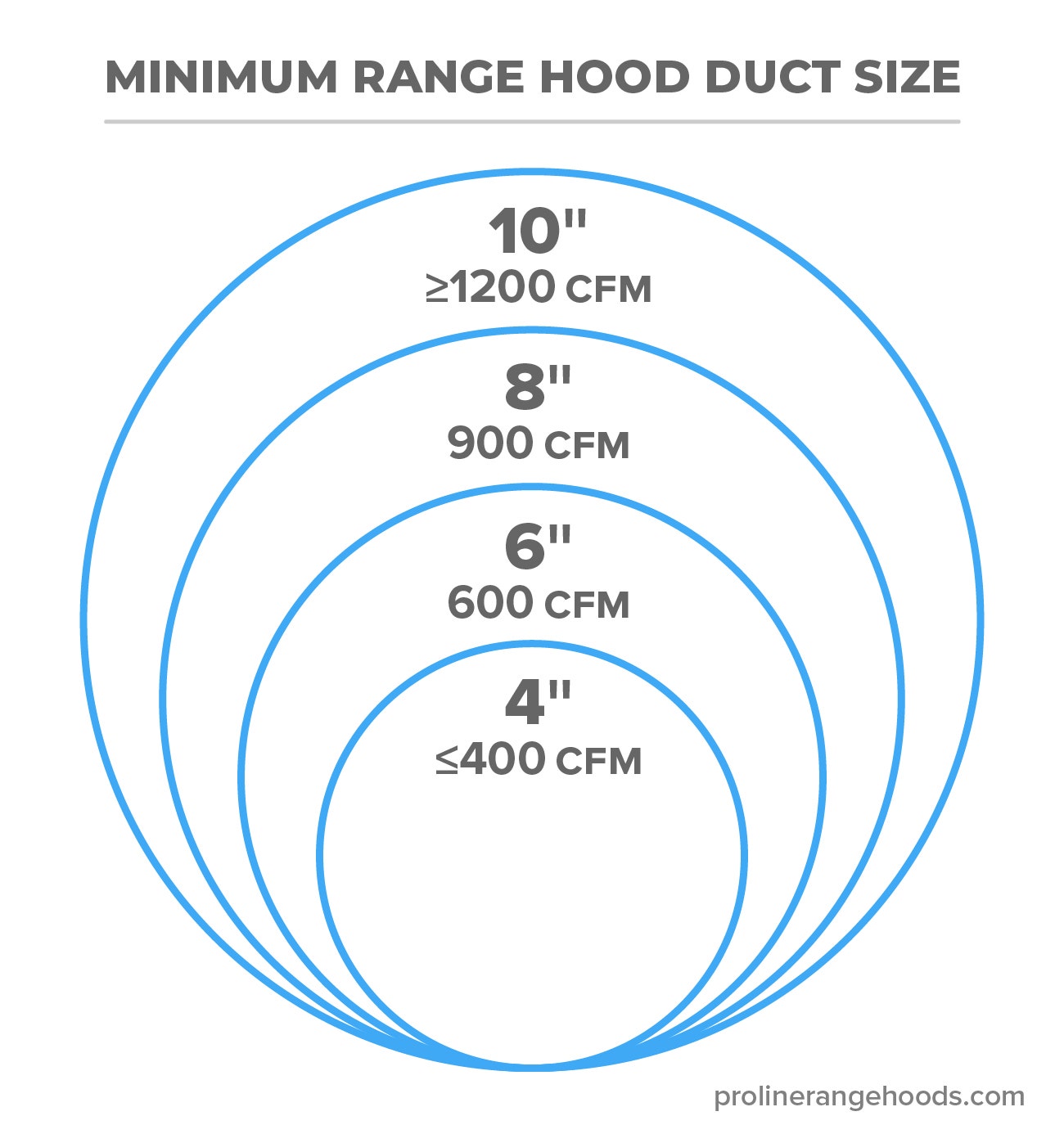
It’s important to not go any smaller than the above requirements. A duct that is too small will choke the air and decrease the efficiency of your hood. Grease can build up in the duct and eventually your hood won’t remove smoke and grease from your outdoor kitchen.
It’ll still try to suck air but that air won’t have anywhere to go. Imagine going for a run and having to breathe through a straw.
For more helpful tips on range hood duct size, take a look at our complete guide.
Filters
With ducted range hoods, you have two options for filters: mesh and baffle. We recommend baffle filters because they are more efficient at capturing grease. Efficiency goes a long way when you’re cooking with high heat grills that produce heavy smoke.
Learn more about range hood filters in our range hood filter guide.
Frequently Asked Questions
Where are outdoor range hood blowers mounted?
Most outdoor range hoods feature local blowers which sit inside the range hood. Some hoods have inline blowers which fit inside the ductwork.
What is the difference between an outdoor range hood & and an indoor range hood?
The main difference between an outdoor and indoor range hood is the material. Quality outdoor range hoods are manufactured in durable corrosion-resistant and weather-resistant 304 stainless steel. Most indoor hoods are manufactured in a less weather-resistant 430 stainless steel that’s not designed for outdoor use.
How do I keep the range hood outdoor vent from making noise in the wind?
Make sure nothing is obstructing the backdraft damper. Test the damper to make sure it opens and closes properly. Look for any other loose metal parts that might be causing the noise in your duct too. Also, you can try adding foam weather stripping to your damper to reduce the noise.
Are you ready to choose your outdoor hood? We hope you’re more informed about what hood works great for you on your outdoor patio. The most important thing to consider is the material. Make sure you invest in a hood that’s rated for outdoor use!
Thanks for reading! To learn more about outdoor hoods and browse our selection, check out the articles below!
Related Articles
4 Best Outdoor Vent Hoods from Proline
Can I install a ductless range hood outside?
How to Increase the Fan Speed of an Outdoor Vent Hood
Where are outdoor range hood blowers mounted?
Most outdoor range hoods feature local blowers which sit inside the range hood. Some hoods have inline blowers which fit inside the ductwork.
What is the difference between an outdoor range hood & and an indoor range hood?
The main difference between an outdoor and indoor range hood is the material. Quality outdoor range hoods are manufactured in durable corrosion-resistant and weather-resistant 304 stainless steel. Most indoor hoods are manufactured in a less weather-resistant 430 stainless steel that’s not designed for outdoor use.
How do I keep the range hood outdoor vent from making noise in the wind?
Make sure nothing is obstructing the backdraft damper. Test the damper to make sure it opens and closes properly. Look for any other loose metal parts that might be causing the noise in your duct too. Also, you can try adding foam weather stripping to your damper to reduce the noise.



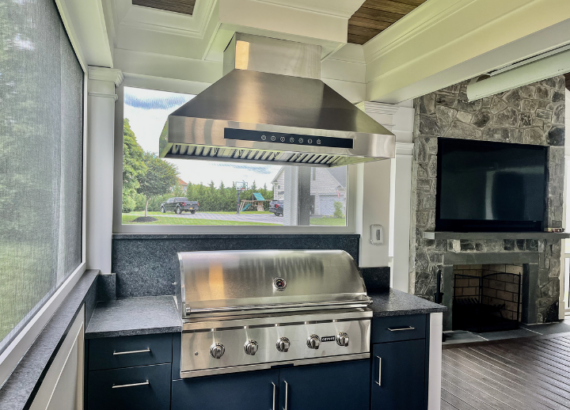


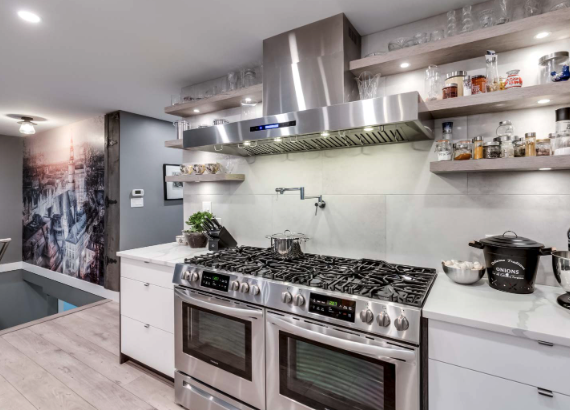
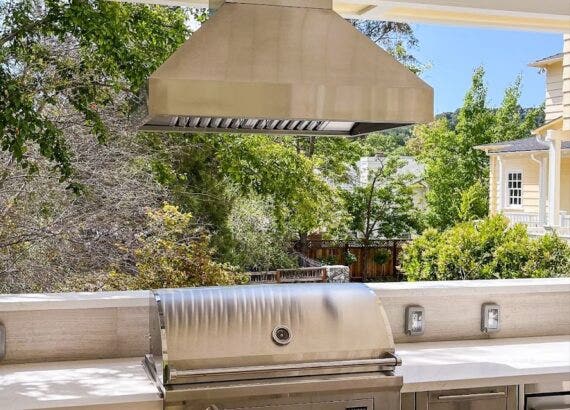
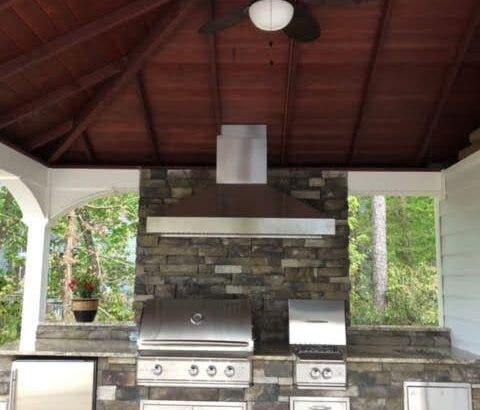
Comments are closed.